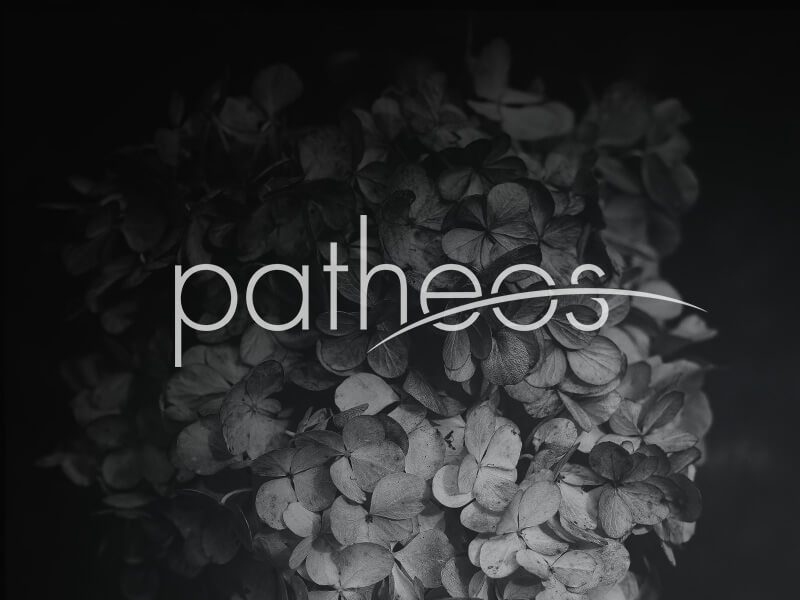This is a follow-up on my last post where I showed that a bit of translation originally done by John Hall for the BYU New Testament Commentary project was published in Denver Snuffer’s revelation of the Fourth Gospel. Before getting to some further details, perhaps I should say something about my view of the big picture. I think it’s interesting, not to mention troubling, to see how info about the Bible that is wrong and misleading – whatever the motives of the people producing and perpetuating the info – can nevertheless be welcomed and accepted time and again as divinely inspired or revealed within various Mormonisms, from the 1800s to the present.
I also think it’s interesting to see how religions can develop in a rather repetitive cycle: new small-scale charismatic movements (e.g. Joseph Smith and company) aim to reform an older and larger group (e.g. Christianity in its assorted denominations); they go on to experience growth and routinization (e.g. the Utah-based church), all the while their charismata decrease, which in turn eventually prompts another round of reformation (e.g. Snuffer and company). That’s one possible cycle, at any rate.
Okay. Besides Hall’s rewriting of John 1:1, here’s another bit of translation he did for the BYUNTC that was never published by the project but now appears in Snuffer’s revelation. At both the 2006 FHE and the 2007 FAIR conference I discussed and linked to in my previous post, Hall translated the Johannine phrase “keep my commandments” like this: “stand watch as a sentry awaiting my every instruction,” which makes it about continuing revelation. This was perhaps even more popular with BYUNTC audiences and BYU Education Week audiences than his translation of John 1:1.
Snuffer was a fan and blogged about Hall’s rephrase of John 14:15, etc., in 2010, saying, among other things, that revelation was being stifled in the mainstream LDS church and that continuing to receive revelation is “our responsibility.” Indeed Snuffer would go on to claim that the Testimony of St John has been revealed to him, with Hall’s rephrase of ‘keep my commandments.’ In Snuffer’s version, John 14:15 reads: “If you love me, stand ready, watching for every communication I will send to you.” Again, Snuffer has revised it some, but this is Hall’s idiosyncratic translation from as early as 2006.
In a second case, then, Snuffer’s version of the Gospel of John has been influenced by Hall. There may be other cases, but just given these two I agree with the commenter on my last post who guessed Hall could be the Greek scholar that Snuffer mentions in his account of how the Testimony of St John was revealed to him. You can read blogs and posts dedicated to Snuffer’s revelation here and here and here, including his account of the new “Restoration Scriptures” in general and the Testimony of St John in particular:
There is a new edition of the scriptures being prepared which will use the JST of the Bible. That will result in both the Book of Moses and JS-Matthew being removed from the Pearl of Great Price. When I was asked to take a look at the project I had the impression that a new translation of John’s Gospel was needed and ought to replace the missing texts. I asked a qualified Greek Scholar to undertake that project and he declined. But the impression remained that it needed to be done.
I made it the subject of prayer and was told to do the work. I spent a few days working with an English-Greek New Testament, the JS Translation of John, and a Greek Lexicon before becoming hopelessly discouraged by the many options and choices. I prayed about it before retiring for the night and essentially quit. I explained that it would take years for me to accomplish this, and that I was not going to be able to solve the riddles of the text. I went to bed assuming I was done with it.
In the middle of that night I was awakened and given the solution to every dilemma I had been facing in the work on the text. So the next day I continued on from where I had abandoned the work and, to my surprise, everything was opened to my mind so clearly and continuously that the entire project was completed in less than three weeks. The light of heaven opened the material in a way I had never thought of nor had previously attained to in considering the Gospel of John. At times it progressed so rapidly that I was unable to finish one part before the next came rolling out. Many new and different things were added, and at least one thing was dropped entirely because it was not part of John’s original composition. Because of the rapid way it rolled out, once I finished the text I went back to clean up a lot of what had been left as incomplete sentences, run-on sentences, missing words (particularly conjunctions) and cryptic or inadequate explanations. The intent of the writer, John, was revealed, including why some things were included in the text and the manner he wrote.
When it began it was an attempt at a “translation” but by the time it was completed it was clearly a “revelation” and not merely a translation of a text. Therefore the result does not have my name on it, because I cannot claim any credit for the content. I failed in what I was attempting. What resulted came from heaven.
If the Greek scholar was Hall, he avoided getting involved for whatever reason. That’s curious. And there’s the curiosity that Snuffer doesn’t name him in this account. Snuffer had no hesitation naming Hall in blog posts from 2010, and Snuffer did so without providing any background on him or introducing him in any way, as though Snuffer’s readers would and should already be familiar with Hall. So why not name him as the Greek scholar, if indeed he was? Perhaps Hall wanted to remain anonymous. Perhaps Snuffer is trying to downplay Hall’s influence so that the revelation can he played up.
There’s also a certain amount of convenience to it all for the purposes of anticipating any possible question of plagiarism and the BYUNTC’s intellectual property rights. But I tend to think that Snuffer, like many religious charismatics, is being sincere in this account. Sure, it parallels the story of Joseph Smith and the translation of the Book of Mormon, to a degree — people often frame their own experiences in reference to past heroes and important events. And, yes, there is a naturalistic view of what probably actually happened: Snuffer mistook excitement and a burst of creativity for inspiration and revelation from God. I don’t think that rules out him being sincere.
Despite the sincerity, however, his version of the Fourth Gospel contains a lot of wrong and misleading info. He adds references to Mormon ideas about a heavenly council and plurality of gods, one of them being Father Ahman, to eternal progression, endless lives, worlds without end, to dispensations and ordinances, temple ritual (as ascent to heaven), foot washing, and the second comforter, obviously. He also seems to imply that Mary Magdalene, whom he equates with Mary the sister of Martha and Lazarus, was Jesus’ wife. None of these additions has any reasonable claim to being original to the Gospel of John. To be clear, the ideas as ideas don’t have to be wrong or misleading, but they certainly become so when they are presented as ancient parts of the Bible, revealed/restored.
Ironically, all the while adding this modern material, Snuffer correctly subtracts something from early manuscripts of the Fourth Gospel and from the KJV, something that scholarship must have taught him was an ancient interpolation, the passage in John 7:53-8:11 about Jesus and the woman caught in adultery. So we have an active interpolator qua revelator deleting a long-time addition to the Gospel of John. Here’s the thing. That ancient interpolation is chronologically as well as conceptually far closer to being original than any of the additions in Snuffer’s revelation. Or for that matter, anything in the JST, which incidentally leaves the passage alone.
Restating my prior conclusion with extra force and some pessimistic realism … The cost may be far too high for most Mormons, but I think that in order to stop the production and perpetuation of this kind of wrong and misleading info among mainstream LDSs and Mormonism as a whole, it will have to be admitted that there were no plain and precious things lost from the Gospel of John or the other books of the Bible. They were never missing; instead they have been added, starting in the early Christian period of manuscript history and textual transmission, and continuing on within various Mormonisms, from the 1800s to the present. To admit that would certainly be difficult and have many implications. Because no such admission is going to be forthcoming any time soon, if ever, we can expect more of the same.











